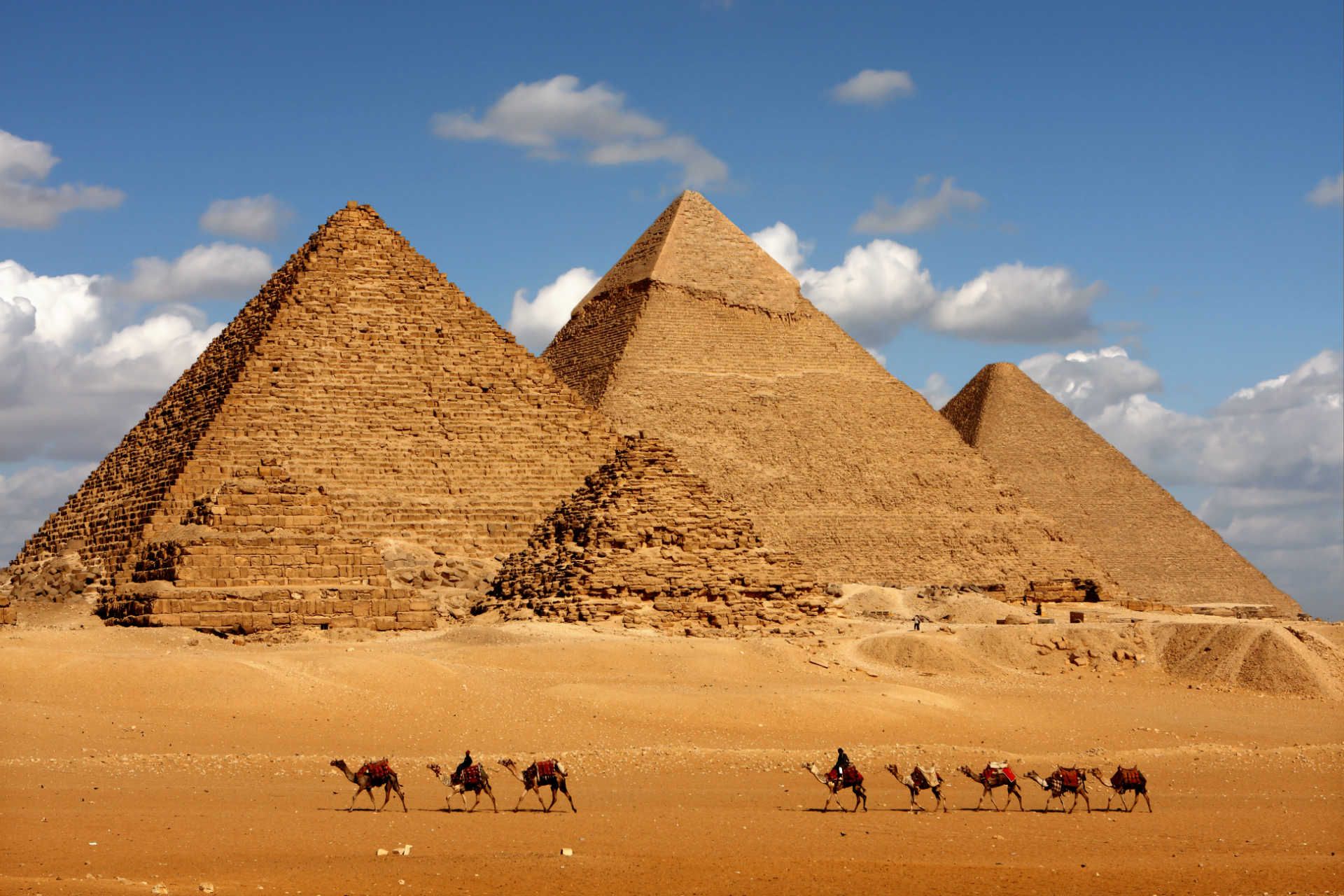#2 Seek out the Black and Bent Pyramids of Dahshur
The peace and quiet beauty of the palm groves around Dahshur, 35km (22 miles) south of Cairo, has attracted many of the cap’s professional class, who have built rural retreats here. The most pleasant time of year to visit the site is mid-winter, when a lake forms within an artificial embankment below the Black Pyramid.
Built of brick but unused by Amenemhet III (1842-1797 BC), one of Egypt’s most colourful kings, the dark colour that gives it its name arises from the fact that it has been systematically stripped of its original white limestone covering. The view of the pyramid across the lake is one of the most charming in Egypt, and well worth the drive from Cairo. This is one of the best tours in Egypt.
There are two other 12th Dynasty pyramids here, another from the 13th Dynasty, and a third not yet identified. Most striking, however, are two 4th-Dynasty pyramids, built by Snefru (2613-2589 BC). The southernmost of the two is the third-largest pyramid in Egypt and is easily distinguished, standing about 300 metres further into the desert, beyond the Pyramid of Amenem-het III, not only by its bulk but by its shape, which has led to it being called the Bent Pyramid.
The 54-degree slope of its sides changes halfway up to an angle of 43 degrees, for reasons that may be rooted in religious symbolism, or may simply be because it had to be finished in a hurry. In 2019, the Bent Pyramid was opened to the public for the first time since 1965. You can now climb down a 79-metre (260ft)-long tunnel to reach two inner chambers.
How to get to Dahshur
- The easiest way to reach Dahshur is by private car or taxi. The drive from Cairo takes around an hour.
- Ride-hailing apps like Uber or Careem don’t always serve the Dahshur area reliably, so confirm with your driver before setting off.
- There’s no direct public transport to Dahshur. The closest you’ll get is the town of Badrashin, but from there, it’s a long and uncertain walk or a pricey local taxi ride through desert roads.
- Many day tours from Cairo include Dahshur as part of a package with Saqqara and Giza. This is the most hassle-free way to see all three pyramid sites in one day.
- Go early or late in the day for the best light and fewer crowds – and bring water and sun protection. There’s little shade on site.











